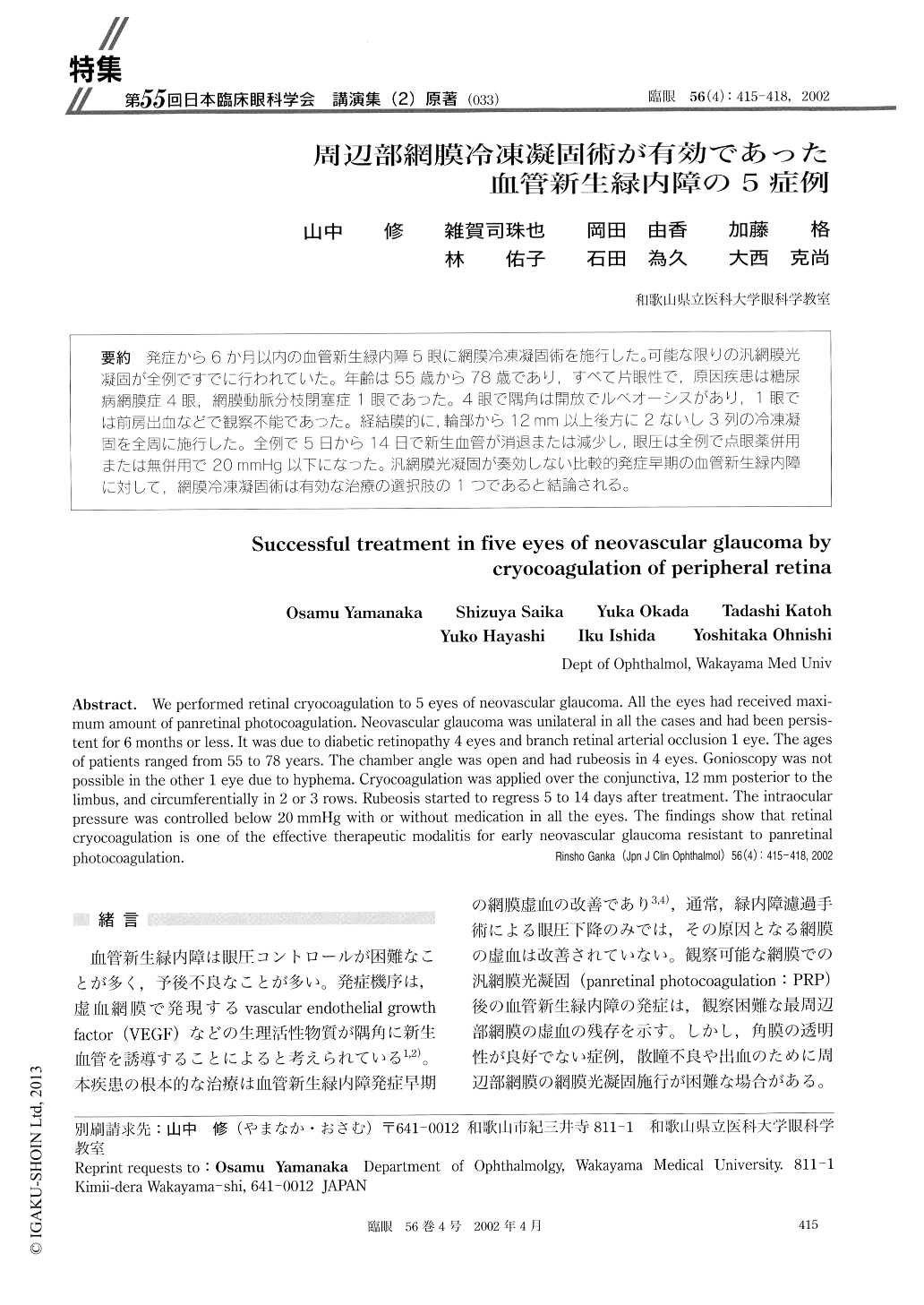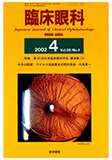Japanese
English
- 有料閲覧
- Abstract 文献概要
- 1ページ目 Look Inside
発症から6か月以内の血管新生緑内障5眼に網膜冷凍凝固術を施行した。可能な限りの汎網膜光凝固が全例ですでに行われていた。年齢は55歳から78歳であり,すべて片眼性で,原因疾患は糖尿病網膜症4眼,網膜動脈分枝閉塞症1眼であった。4眼で隅角は開放でルベオーシスがあり,1眼では前房出血などで観察不能であった。経結膜的に,輪部から12mm以上後方に2ないし3列の冷凍凝固を全周に施行した。全例で5日から14日で新生血管が消退または減少し,眼圧は全例で点眼薬併用または無併用で20mmHg以下になった。汎網膜光凝固が奏効しない比較的発症早期の血管新生緑内障に対して,網膜冷凍凝固術は有効な治療の選択肢の1つであると結論される。
We performed retinal cryocoagulation to 5 eyes of neovascular glaucoma. All the eyes had received maxi-mum amount of panretinal photocoagulation. Neovascular glaucoma was unilateral in all the cases and had been persis-tent for 6 months or less. It was due to diabetic retinopathy 4 eyes and branch retinal arterial occlusion 1 eye. The ages of patients ranged from 55 to 78 years. The chamber angle was open and had rubeosis in 4 eyes. Gonioscopy was not possible in the other 1 eye due to hyphema. Cryocoagulation was applied over the conjunctiva, 12 mm posterior to the limbus, and circumferentially in 2 or 3 rows. Rubeosis started to regress 5 to 14 days after treatment. The intraocular pressure was controlled below 20mmHg with or without medication in all the eyes. The findings show that retinal cryocoagulation is one of the effective therapeutic modalitis for early neovascular glaucoma resistant to panretinal photocoagulation.

Copyright © 2002, Igaku-Shoin Ltd. All rights reserved.


